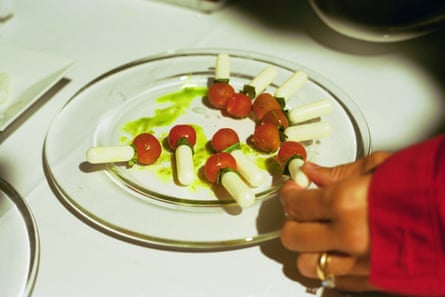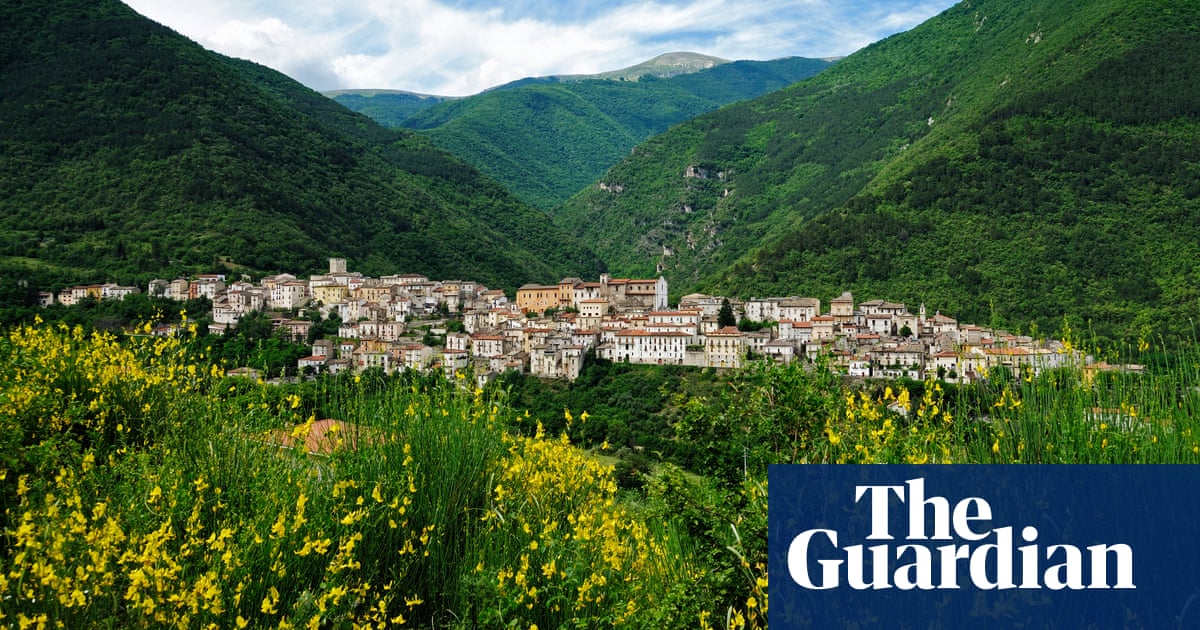They revolutionised cooking worldwide with radical techniques and a highly technical cuisine of playful trompe l’oeil – but now many disciples of Catalonia’s iconoclastic chef Ferran Adrià believe it’s time to get back to their roots.
Catalonia has been named World Region of Gastronomy 2025 by the International Institute of Gastronomy, Culture, Arts and Tourism and later this month 60 Michelin-starred chefs will launch a campaign to position Catalonia as a unique and exceptional gastronomic destination.
While not rejecting the techniques of so-called molecular gastronomy introduced by Adrià at his restaurant El Bulli, with its foams, spherification and liquid nitrogen, the emphasis will be on local produce and the region’s gastronomic culture. El Bulli closed in 2011.
“Copying El Bulli is over. Now it’s become a huge repertoire of techniques that each person can apply to their cooking,” said Jordi Artal, chef at the two-starred Cinc Sentits in Barcelona. “I wouldn’t say there’s a backlash; it’s part of the natural ebb and flow. We use modern techniques but in ways that hark back to Catalan gastronomic history. That’s the ideal.”
Artal said there had always been a schism between those who believe you should only cook what’s in season and Adrià saying: “I’m an artist, find me the world’s best cherry in January so I can make my dish.”

Carme Ruscalleda said: “The concept may have changed but my cooking has always been based in the Mediterranean and its produce.” The chef was speaking in her home town of Sant Pol de Mar, next door to the restaurant where she won the first of seven Michelin stars. “We must embrace new ideas without losing sight of who we are. Catalan cuisine has Roman and Greek and medieval roots. We make many dishes that are basically medieval but with modern techniques.”
This year chefs such as the Roca brothers in Girona and Jordi Vilà in Barcelona have opened – running alongside their flagship restaurants – more modest establishments where they offer more traditional dishes.
“We are taking a broad but not a simplified view of Catalan cuisine,” said Joan Roca about Fontané, the brothers’ latest venture, where prices are well below those of El Celler de Can Roca, twice voted the best restaurant in the world.
Vilà, chef at one-starred Alkimia and the more homespun Al Kostat del Mar, said: “Joan Roca and Carme Ruscalleda have always cooked Catalan food but what happened was that what became important was what we call cocina vanguardista [avant-garde cuisine], when what really matters is to use local produce and express yourself in your cooking.
“Many young chefs don’t aspire to be Joan Roca or Ferran Adrià but want to cook the dishes their mothers or grandmothers made.”
Tradition doesn’t always come cheap, however. The tasting menus at high-end restaurants such as El Celler de Can Roca cost upwards of €200 (£170), without wine.
Oriol Castro, one of three chefs – all ex-El Bulli – behind Disfrutar, voted best restaurant in the world last year, said no one expected people to pay those sorts of prices for basic Catalan dishes.

“In Disfrutar we offer many dishes based on traditional recipes, with new techniques but traditional flavours, such as a suquet de peix [fish and potato stew] or mar i muntanya [seafood and rabbit or chicken casserole],” said Castro, who insists there is no backlash against the El Bulli school of cooking.
“People come here to eat modern, creative versions of traditional dishes. What’s important is the combination of creativity and tradition. There isn’t a war. All of us want to preserve this tradition.”
Artal said that while he was no purist, in keeping with his principles there were only Catalan and Spanish wines on his wine list. “I can’t explain to a customer that a dish was inspired by my great-grandmother and that we’re using locally sourced ingredients and then serve a wine from Bordeaux,” he said. “I love yuzu but there’s no yuzu on the menu because I couldn’t say my grandmother used yuzu.”
Everyday Catalan cuisine may be in good health outside Barcelona but in the capital it’s far easier to find ramen, sushi, hamburgers or pizza than traditional fare.
“I’m not against ramen or hamburgers, I’m against globalization,” said Vilà, who has published a humorous “self-defence manual” for Catalan cooking. “Here there are 50 ramen places and none that serve escudella,” a traditional Catalan stew containing pasta or noodles.
Ruscalleda said: “Young people are attracted to the new, so they order sushi or ceviche but they don’t know about their own culture.” She shares the view that the biggest threat to traditional cuisine everywhere is that people have stopped cooking at home.
In the meantime, it seems it is up to the culinary elite to maintain tradition, a paradox that Vilà accepts.
“We’re in a transition because the grandmothers of the future don’t want to stay at home cooking, they want to be out in the world,” he said. “Obviously, a top chef is no substitute for a grandmother, but it’s up to us keep the tradition alive.”

 5 hours ago
8
5 hours ago
8

















































